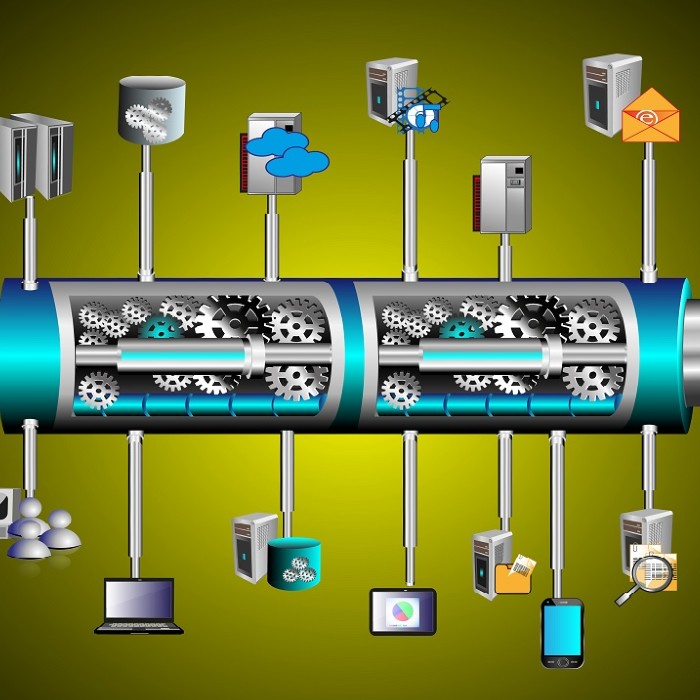Why is there not an Uber of computing?
This question from Dheeraj Pandey founder and former CEO of Nutanix stumped technology analysts at the .NEXT conference in Anaheim, California.
The answer is probably because there is an Amazon, a Google, and a Microsoft. Each one an Uber-crusher in itself.
But that’s not what Pandey meant. The way he sees it, today’s cloud computing market, which is led by a handful of big companies, is headed for a dramatic shift that will shrink and disperse to wherever computing is consumed.
As of now, there aren’t more than a few hundred large data centers around the world that cater to the needs of its 8 billion population. However, there’s no reason these for these billion-dollar collections of mainframe-like server racks and clusters to dictate terms in how common people use applications, data, or the internet.
The logical questions that follow are: How far or long can something go against the grain? At what point does the pendulum swing so far that it must go in the opposite direction? When does big become monolithic and resemble the antithesis of true growth?
Answers to these questions point to the future of cloud computing, according to Pandey. He believes we live in a world ruled by dispersion, where big things shatter into smaller things then get distributed.
Shrink > Disperse > Distribute
Consequently, Pandey sees software innovation shrinking cloud computing so that it’s almost invisible and more easily distributed anywhere it’s needed
Computing has always gone through this dispersion. First, mainframes became increasingly bigger and more powerful. Then Microsoft came along and dispersed computing power to desktops.
When Microsoft became huge, Apple crashed their party with user-friendly laptops and desktops. However, this was again dispersion (and disruption) in disguise. They created smartphones out of computers and made them smaller.
Computing itself time and again becomes like Uber, where service providers become suppliers.
In business, that is exactly what Amazon did to Walmart.
Walmart was a fully vertically integrated supply chain company that nobody could touch. Amazon disrupted their business model by not having a warehouse (shrinking the fulfillment process) and still making money.
That’s how Windows displaced Macintosh in the early 90s. They said, “Look, we’re going to create software and let the PC manufacturers make money as well.” The market became 10 times larger proverbially overnight. Android came in against Apple saying, “Look, we can go into this vertically integrated, hardware-focused smartphone market. Let’s distribute the power to manufacturers, developers, and end users with software.” And handset suppliers actually ended up making Android three times larger than iOS.
Technology Is the Enabler
“Over the next 10-15 years we can expect cloud computing to quickly evolve, and become so ubiquitous, that the concepts we label as ‘cloud’ will simply be known as ‘computing.’ Cloud vendors will have solved the compute hardware problem and we can expect infrastructure to become a commodity. The real future of cloud will be easy access and consumption of any data and services in the cloud,” said Dennis Allio, CEO of Workstate.
All disruption and dispersion is arguably brought about by technology. Like change, dispersion also trickles down from top to bottom. Or, in the case of cloud computing, from enterprise to consumer.
The future of enterprise cloud computing, as we see it, is driven by hybrid, multicloud environments, cloud-native applications, increased spend on cloud infrastructure, and more business workloads migrated to the cloud.
However, there are a lot of technologies working together that are driving overall cloud adoption by blurring the lines between data centers and consumer-facing compute environments.
Here’s a quick look at three inter-related technologies.
Edge Computing
With more IoT devices connecting to the internet by the minute, edge computing has emerged as the key to real-time, spot data analysis. It streamlines the flow of traffic from IoT and edge devices to data centers or the cloud.
Edge computing complements cloud computing by lowering latency and addressing network bandwidth problems at remote, branch, and mobile locations. With centralized, cloud-hosted management and control, hyperscale cloud providers can create an array of opportunities for businesses. In fact, Gartner predicts that by the end of 2023, 20% of all edge computing platforms will be delivered and managed by hyperscale cloud providers – a dramatic rise from less than 1% in 2020.
“It’s imperative that enterprises prioritize a distributed cloud-based solution as the default and future-proof edge solutions by relying on partnerships and ecosystems over a single-vendor approach,” said John McArthur, former Sr. Director Analyst at Gartner.
Serverless Computing
Serverless computing is a cloud execution model in which the cloud provider takes care of hardware resource allocation, allowing IT to build and run applications without worrying about configuration, capacity planning, management, maintenance, updates, resilience, fault tolerance, scaling, security, data privacy, or recovery.
A serverless architecture can act as a set of vital add-ons that many organizations are looking for in PaaS offerings. It brings instant and packaged deployments, autoscaling, usage-based pricing, and vendor portability to PaaS-like environments. Further, it can also be deployed on the edge, unlike PaaS.
No wonder then that the serverless computing market is expected to grow at more than 23% over the next five years.
“Serverless is a true cloud computing paradigm, and it is hard to overstate how much it will impact how much cloud is consumed going forward,” said Derek Swanson, CTO of Silk Technologies. “It is such a compelling model, that applications will be designed and developed going forward to work with serverless, rather than serverless being developed to work with the way we currently develop applications.”
Hybrid Cloud
Enabling integration and synergy between serverless, edge, and other technologies, and bucketing them with cloud computing is the all-encompassing hybrid cloud model.
While the hybrid cloud doesn’t necessarily make things smaller, it certainly enables organizations to adopt a distributed and varied IT infrastructure, adding and inter-connecting multiple private and public cloud environments at will.
Which is why it has emerged as the IT operations model of choice for 9 out of 10 enterprises, according to the Nutanix Enterprise Cloud Index report. IT leaders across the globe are putting their money where their mouth is by adopting hyperconverged infrastructure (HCI) in their data centers and decommissioning non-cloud-enabled data centers in favor of private and public cloud usage.
“The future of cloud computing will most likely represent a combination of cloud based software products and on premises compute to create a hybrid IT solution that balances the scalability and flexibility associated with cloud and the security and control of a private data center,” said Michael Corrado, Sr. Worldwide Marketing Manager at HPE. “The variable element of this hybrid IT future and the most compelling use for cloud will be the software companies that offer their products only as cloud solutions, which will diversify a customer’s cloud needs to multiple platforms based on their preferred software vendors.”
Distributed Growth: Get Along and Go Along
The idea that cloud has to be vertically integrated and no one else makes money is the antithesis of a market that’s worth half a trillion dollars. The only way it can grow to a trillion dollars over the next five years is through software dispersion and by creating a network of suppliers who make some money of their own along the way.
Like the way PC manufacturers made money. The way handset manufacturers make money with Android. The way Amazon made money at the cost of Walmart and other thousand-chain retailers.
This is the approach that Nutanix is taking. We are in the business of cloud software. We need to figure out a way to survive, thrive, and compete with the likes of Amazon.
And we propose to do that not by building massive, asset-heavy facilities and 10,000-rack data centers but by out-distributing Amazon in software and making things smaller – maybe even half a rack of a cloud. Every day we ask ourselves: What would a full-fledged cloud look like not at 5,000 or 500 racks, but at half a rack? That’s the equivalent of a smartphone in a world dominated (and driven) by desktops.
The world has always gone and dispersed and distributed big things and shattered them into smaller things. It’s the same with clouds – as soon as they grow too big to hold water, they rain. They rain everywhere until they’re dispersed. And only then does the sun shine through.
This is an updated version of an article first published November 18, 2019.
Ken Kaplan is Editor in Chief for The Forecast by Nutanix. Find him on Twitter @kenekaplan.
Dipti Parmar contributed updates. She is a marketing consultant and contributing writer to Nutanix. She’s a columnist for major tech and business publications such as IDG’s CIO.com, Adobe’s CMO.com, Entrepreneur Mag, and Inc. Follow Dipti on Twitter @dipTparmar or connect with her on LinkedIn for little specks of gold-dust-insights.
© 2022 Nutanix, Inc. All rights reserved. For additional legal information, please go here.








